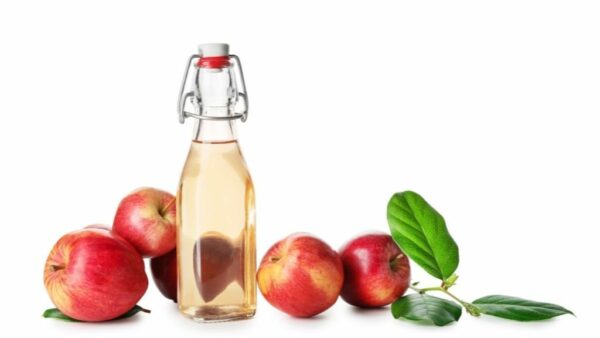About a year ago, several scientific studies were carried out regarding Malic Acid. This highlights that this organic acid can have a positive effect on the skin in several ways. Plus, we don’t need to storm a drug store’s shelves full of beauty or vitamin products. We can do more by changing our diet than we would think. What is Malic Acid and how can it help keep our skin healthy?
This article gives you an overview of the following topics:
- What is Malic Acid?
- Effects of Malic Acid in skincare
- Malic Acid and collagen production
- Other effects on the body
- Fighting kidney stones
- Conclusion, how to safely use Malic Acid
What is Malic Acid?
Malic Acid is a scientific term, it comes from the Latin word “malum”, which means apple. From the original meaning of the term, we can even work out the easiest way to get it: through our diet. Malic Acid is found naturally in many fruits and vegetables, most notably apples, pears, and grapes. At the same time, Malic Acid is a popular flavour enhancer in food preparation for acidifying and preserving foods. As a natural acid, it is also a common ingredient in skincare. It’s also good to know that the body also produces Malic Acid when it converts carbohydrates into energy.
Effects of Malic Acid in skincare
Malic Acid, with the food additive number E296, belongs to a family of fruit acids called alpha-hydroxy acids. We can offend find them in pharmaceutical products and in products sold in health stores. Since these acids help exfoliate the skin, they remove dead skin cells and refresh the skin. Thus, skin care products that contain Malic Acid can hydrate the skin, making it smoother, and they can even eliminate the most stubborn wrinkles. It is no coincidence that Malic Acid is an essential ingredient in popular “anti-ageing” creams.
Malic Acid is used in cosmetic products to balance pH levels, which makes these products gentler to the skin. This can be of paramount importance: if the pH levels are not balanced, the skin’s ability to defend itself is weakened and there is a greater chance of dehydration or the appearance of rashes.
Malic Acid and collagen production
Who hasn’t heard of collagen, one of the most popular ingredients today, found in countless nutritional supplements and skincare products? Dr Anne Chiu, a dermatologist at the Derm Institute in California, has confirmed that Malic Acid at higher concentrations may play a role in the body’s ability to produce collagen. Collagen is a protein that helps rebuild cells, giving the tissues strength and elasticity. As we age, our body’s collagen production decreases, which is partly when the skin loses its elasticity. However, the ability of Malic Acid to stimulate collagen production can be an effective tool in reducing the signs of ageing.
Other effects on the body
Scientific research shows that in addition to the positive effects of Malic Acid on the skin, it can have other benefits. Researchers investigated the effectiveness of Malic Acid supplements in sprinters and long-distance runners. It was found that the combined use of creatine and Malic Acid increased the athletes’ physical performance, endurance during physical activity, and also helped prevent muscle weakness. Creatine, organic acid, and amino acid are especially effective as a supplement. It helps the muscles produce energy, increasing muscle mass, performance and strength.
Like with Malic Acid, the body is able to produce creatine through a protein-rich diet with enough amino acids. This process, in turn, is very metabolically costly. They studied a combination of these two organic acids in athletes. It was found that the physical performance of sprinters significantly increased in terms of strength, total activity, muscle composition, and the production of growth hormones. Long-distance runners experienced a significant improvement in the distance they could run.
These results aren’t so surprising, since a 1995 study experimented in a similar way with Malic Acid. The Malic Acid was combined with magnesium to combat a disease affecting the whole body called fibromyalgia, which is accompanied by muscle and joint pains. The researchers treated 24 patients with fibromyalgia for six months using the placebo method and the combination of Malic Acid and magnesium. In patients who regularly took Malic Acid and magnesium, the pain caused by the disease was reduced significantly. Since 1995, research hasn’t focused on the beneficial effects of Malic Acid. So its efficacy in the treatment of fibromyalgia is still not proven, and further research is needed using more modern research tools.
Fighting kidney stones
Other studies have shown that Malic Acid is a precursor to citrate, a substance believed to prevent calcium from binding with other substances. These are responsible for the formation and worsening of kidney stones. Preliminary laboratory experiments have also shown that the consumption of Malic Acid can increase not only the presence of these beneficial citrates in the body but the pH levels of the urine. This makes kidney stones less likely to form. Since pears, for example, are naturally rich in Malic Acid, future studies will focus on whether a diet rich in pears, combined with low consumption of meat and salt, can prevent kidney stone formation.
Conclusion, how to safely use Malic Acid
Who wouldn’t say now that regular use of Malic Acid is the secret key to youth and general well-being? However, experts recommend using it in moderation. Unless your doctor prescribes it in the form of a dietary supplement for a specific health problem, Malic Acid is found naturally in a vegetable and fruit-rich diet. Seasonal fruits can also help. You should eat cherries in the spring, berries, peaches, and plums in the summer, and apples, pears, grapes, and citruses in the autumn and winter.
Nature has the best remedies. A healthy diet is probably the safest way to get a moderate yet adequate intake of Malic Acid. Some cosmetic products can cause an allergic reaction (itching, redness, burning sensation) in some people. The long-term effects of high-dose Malic Acid supplements are still unknown. It seems that today, according to scientific data, the key to the health of the skin and body lies in the diet. Including a diet rich in Malic Acid and vitamin C, which stimulates collagen production.


